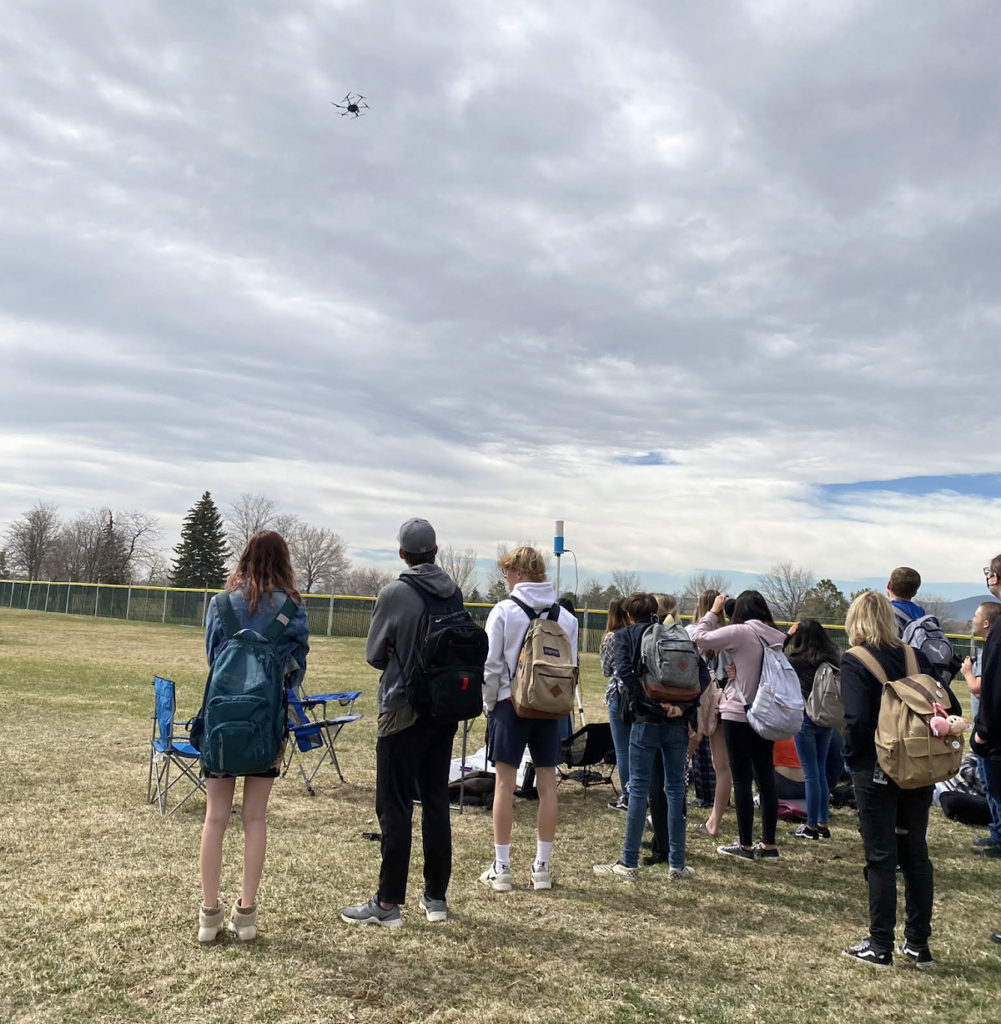
Loveland High School students experienced atmospheric science in action March 28, thanks to a visit by Colorado State University graduate students.
Lance Niño, who received his M.S. from CSU’s Department of Atmospheric Science in 2021, teaches meteorology at the high school and invited the atmospheric science grad students to visit his classes. Nick Falk, Sean Freeman, Gabrielle Leung and Allie Mazurek demonstrated how they use radiosondes and drones to collect atmospheric data.
“I arranged this event partly so my students could get some hands-on experience in meteorology, but partly because I have fond memories of launching balloons and flying drones,” Niño said. “I wanted to share these amazing experiences with my students.”
Hands-on science

A radiosonde is an instrument carried by a weather balloon up through the atmosphere, where it measures atmospheric pressure, temperature, humidity, and wind speed and direction. Two LHS students launched the balloon, and the class watched the data reported in real time via an antenna and laptop on the ground.
“Radiosonde observations are critical for our daily weather forecasts, and I think it’s cool that the students have now participated in launching one,” said Falk, who helped organize the event.
During a flight demonstration of the drone, the CSU students explained how they will use drones to collect data during the BioAerosols and Convective Storms field campaign, set to launch in June. The campaign’s objective is to understand the exchange of bioaerosols, such as pollen, between the surface and atmosphere and how they affect storms.
The drone, one of three used by University Distinguished Professor Sue van den Heever’s research group, is equipped with a camera, an infrared camera, and a sensor that detects pressure, temperature and humidity. Van den Heever, together with her research group and a number of other students from the department, was one of the first researchers to employ drones to study storms.
A memorable experience

Niño said the event was a highlight of the semester for his students. He especially enjoyed how interested and engaged the students were and the quality of the questions they asked.
“Exposure to real scientists doing real science is valuable at the high school level. When I teach science, I don’t want to just teach about science,” Niño said. “I’m so thankful ATS could provide this opportunity to engage these students in science.”